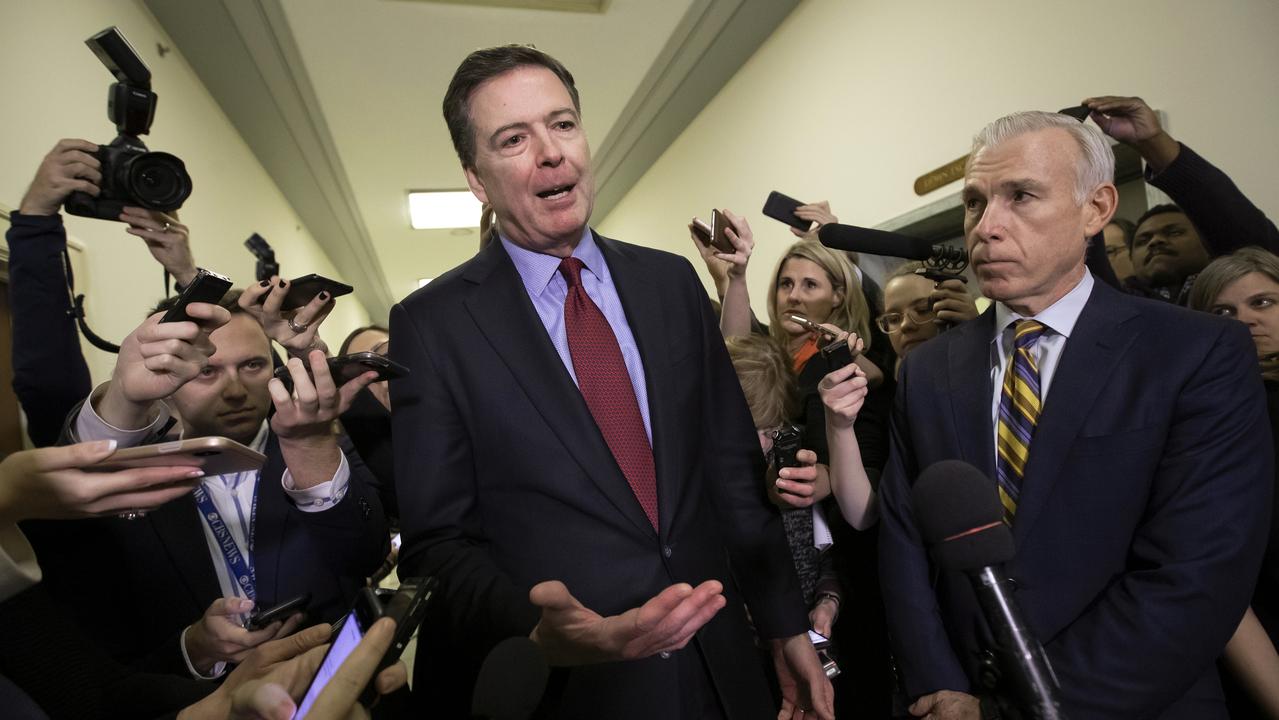Axe the tax and save?
WE check the claim energy bills will fall by an average $550.

FOR political pundits, parties and players, the carbon tax is the tax that just keeps giving. But for voters, its abolition — most likely at the hands of the new Senate next month — comes with a Coalition bonus promise that, having been uttered so many times, has gained an almost mystical aura.
So, will the average Australian household be $550 a year better off without the carbon tax?
We decided to check.
Given the government’s fondness for the figure, voters may be inclined to think of it more as holy writ than a contestable claim or, what it actually is, the output of three-year-old economic modelling by Treasury.
Yes, it certainly has more credibility than Agriculture Minister Barnaby Joyce’s warning the tax would lead to $100 lamb roasts, but is it really gospel?
Roughly half the $550 in the Treasury modelling comes from the estimated impact of the tax on electricity and gas prices, directly on household power bills and indirectly as higher input costs flow through the economy.
They went up by an estimated 9 per cent and 7 per cent respectively, with the tax’s introduction at $23 a tonne in July 2012 — an overall imposition of about $270 — so the theory is they will come down by the same number. A further $40 is accounted for by the estimated impact on food.
But it is with power prices that the carbon tax rubber hits the road.
Is the modelling right?
The answer is, broadly/roughly/kinda, yes, as far as modelling — any modelling — goes. Joe Hockey is certainly wedded to this aspect of his department’s work, using his budget speech to remind voters they will benefit by “$550 next year alone” and keep Labor’s generous carbon tax compensation package.
The biggest part of that package was the rise in the tax-free threshold from about $6000 to $18,200 — worth $300 annually to a family on $80,000 a year.
Generous indeed, especially against the backdrop of the recent federal budget and its cuts to Medicare, the Pharmaceutical Benefits Scheme, welfare payments and an increase in petrol tax, a regular cost of living item for most households.
Ben Phillips, from the National Centre for Social and Economic Modelling (NATSEM), the independent economic research centre based at the University of Canberra, concurs — broadly — with the Treasury. NATSEM puts the cost of the tax at closer to $520 a household, because it uses updated prices from energy regulators.
But, as Phillips adds, modelling is “by its very nature not precise”.
“Even from looking at the CPI figures we can’t get a good handle on the exact impact as we don’t unpick the carbon impact; we get the impact of carbon and a whole range of other factors,” he says. “I’m not saying that the price impact will be the same on the way out, only that the modelling will likely predict a similar ‘out’ impact as ‘in’.”
The Australian Competition & Consumer Commission has been tasked to ensure energy suppliers pass the benefits of repealing the tax back to consumers. The government has given the ACCC $10 million in extra funding and the power of coercion to ensure that happens. Monitoring started on March 1 and will go through to June 30 next year, with report-backs to the Treasurer at the end of each quarter.
The ACCC will also monitor other sectors directly affected by the tax, including aviation, waste services and manufacturing — keeping watch on what’s happening across the economy by using Australian Bureau of Statistics input-output tables.
Part of the national accounts, they provide detailed information about the supply and use of products in the economy. They are not done every year.
This is where the journey of this fact-checker became a tad confusing: the ABS itself says it is “unable to measure the impact of the carbon price”. The bureau says: “The ABS was not able to quantify the impact of carbon pricing, compensation or other government incentives and did not produce estimates of price change exclusive of the carbon price or measure the impact of the carbon price.
“Changes in the prices charged by companies for their outputs, paid by companies for their inputs or paid by consumers, were reflected in the suite of price indexes compiled and published by the ABS. For the same reasons, the ABS is not able to identify separately the impacts of the potential removal of carbon pricing.”
But how come the ACCC is able to do what the ABS can’t, using the ABS’s own tools? “When the ABS says they are not able to quantify they are just saying that as a statistical agency they don’t do everything,” ACCC chairman Rod Sims says. “They don’t use their tools to do that. But anybody can use their tools and do that.
“So if you use their tools on input-outputs and put in electricity and gas and a few other things then you will get, I assume, something like the number $550.
“It’s certainly not a surprising number, the $550; if electricity and gas are directly $280, it will have a knock-on effect of roughly $280 because they affect so many industries. I am not trying to make this complicated. I am not trying to be defensive of the government’s number. I am simply saying that from where I sit personally it is not a surprising number.”
So, this is where this particular fact-check could end: there doesn’t appear much dispute about the modelling behind the carbon price, and the chief watchdog not only thinks the $550 is about right but has plenty of tools and powers to make sure companies do the right thing and pass it on. Happy days.
Will the average household be $550 better off? On the basis of the above, you’d have to say yes or something pretty close to it.
But doubts remain.
For a start, the ABS’s input-output tables for 2012-13 will not be published until June next year. They should enable the ACCC or any enterprising economist to show the price effects of carbon tax washing out of the economy. Or will they?
Tony Wood, an energy expert from independent think tank the Grattan Institute, believes the actual figure per household will remain elusive. His analysis is based on what’s happening in the actual energy market. He notes the numbers used as the basis for the Treasury modelling have changed: network costs have gone up, energy usage and emissions intensity have come down.
“For electricity, assuming consumption of 7000kWh per year and an average intensity of 0.92 tonnes per megawatt hour, at a carbon price of $24 per tonne, you get $154 per household. But consumption has fallen — to around 6500kWh — as has the intensity (0.87), so that the savings become $135 per year.”
For gas, there is considerable variation of usage across the country, with the average Victorian household spending about $80 a year against its Queensland equivalent, at $12. NSW households sit roughly in the middle, spending $31.
“To say that people are going to save $70-$80 a year on their gas bill is skipping across the surface,” Wood says. His best guess is that the one-off benefit of repealing the carbon tax in terms of household power bills will be far less than $250 a year.
Savings in electricity will be under $150 a household — and given the wide variability in the usage between states, it will be hard to make up the other $100 with gas.
Wood argues it will be near impossible to find a further $300 or so to reach the $550 target.
“I am prepared to believe that the cost is in the range indicated, but I would challenge anyone to get close,” he says.
As the carbon price will fall to the European market price (from a fixed $25.40 per tonne to about $7-$10 a tonne) on July 1 next year, the forward savings will be much less after the first year, Wood says.
There is wide variation between the states in the electricity market. It is hard to see consumers in Western Australia and South Australia gaining $500 plus from the repeal of the carbon tax, if it currently adds only $70 and $100 respectively to the cost of the average bill, according to data prepared by the Australian Energy Market Commission late last year. This compares with $182 in NSW and $139 in Victoria.
The real political problem is that because of rising prices few, if any, voters will see an actual cut in their power bill as a direct result of the carbon tax’s demise. The government will be selling the idea to voters that with the carbon tax they would have been even worse off. This will come as cold comfort.
The Queensland Competition Authority recently released its draft determination for electricity prices, showing the average household bill will go up $191 with the carbon tax — and $72 without it. So it could be worse, but it’s still not great.
Another example: in terms of gas, the Independent Pricing & Regulatory Tribunal in NSW recently found retail gas prices will go up by $152 on July 1, or $114 in the absence of the carbon tax.
These numbers chip away at the veracity of the $550 figure — and, as mentioned earlier, this is not to examine how much of that number remains in the wallets of the average household after budget changes.
With such cost burdens in the offing, even without a carbon tax power costs are going to remain a political hot potato for years to come and, while much of the pain will be felt at a state level, there are myriad ways the federal government will feel constant heat.
Not least is the current debate about the renewable energy target. The federal review of Labor’s RET — which has underpinned the rapid growth of wind farms and other renewables — is coming to a close, and the indications are that the present expansionary targets will be curbed, if not scrapped.
Proponents of the RET say renewables suppress the wholesale price of power and help temper household power bills and that, across time, getting rid of them may add more to the average household power bill than the carbon tax. Of course the fundamental difference is political: no one in parliament has been accused of telling the “great big RET lie”. Not yet, anyway.
Peter Fray is The Australian’s deputy editor (news) and the founder of Politifact Australia. Thanks to Adam Creighton, Sid Maher and Phil Hudson.




To join the conversation, please log in. Don't have an account? Register
Join the conversation, you are commenting as Logout